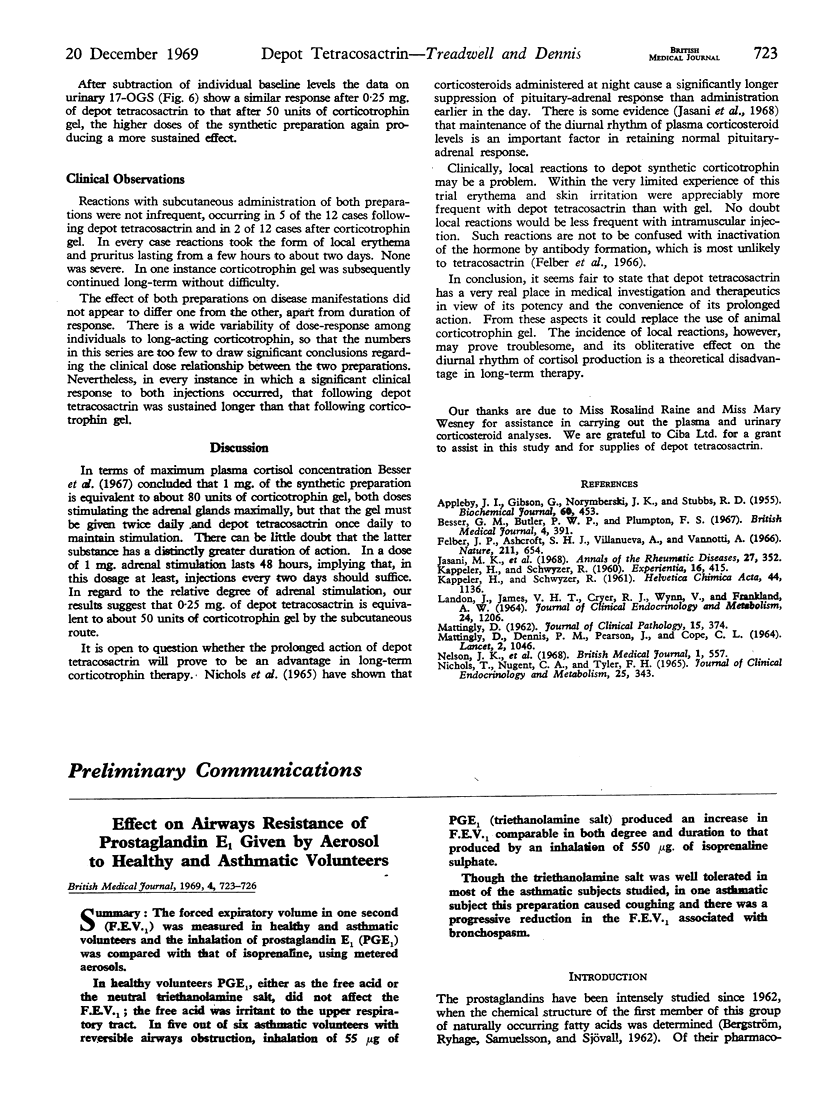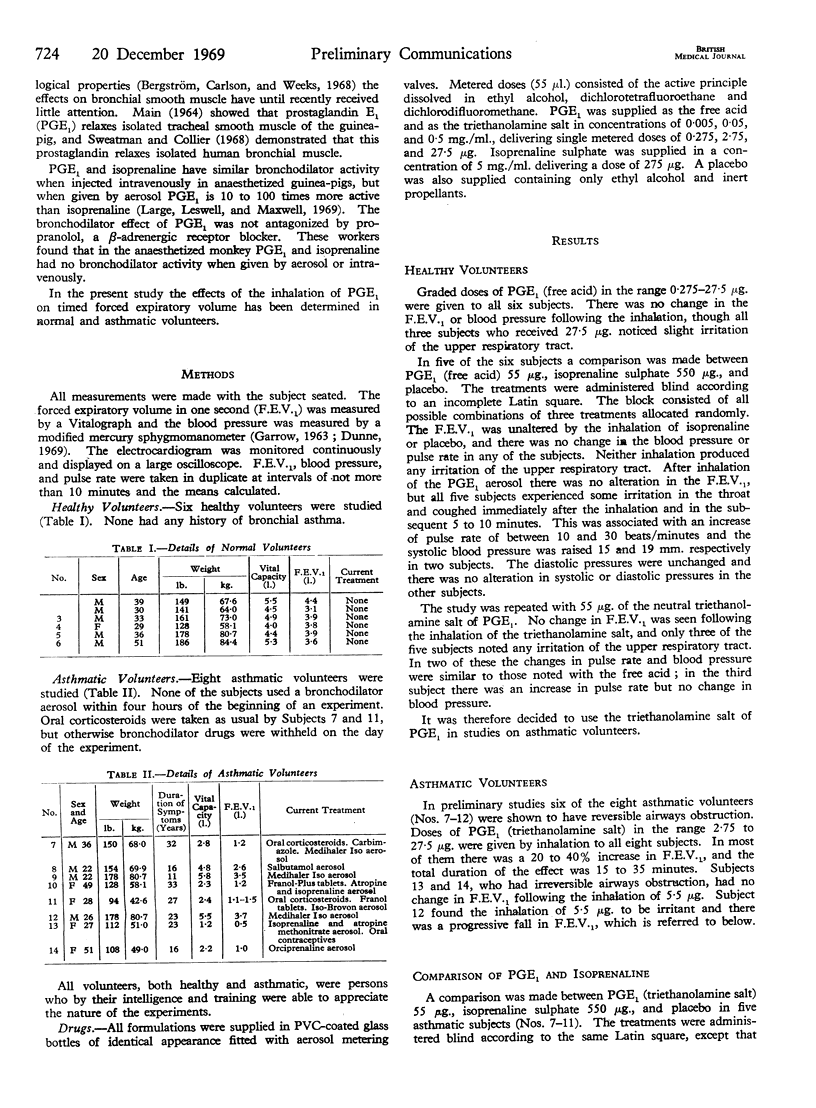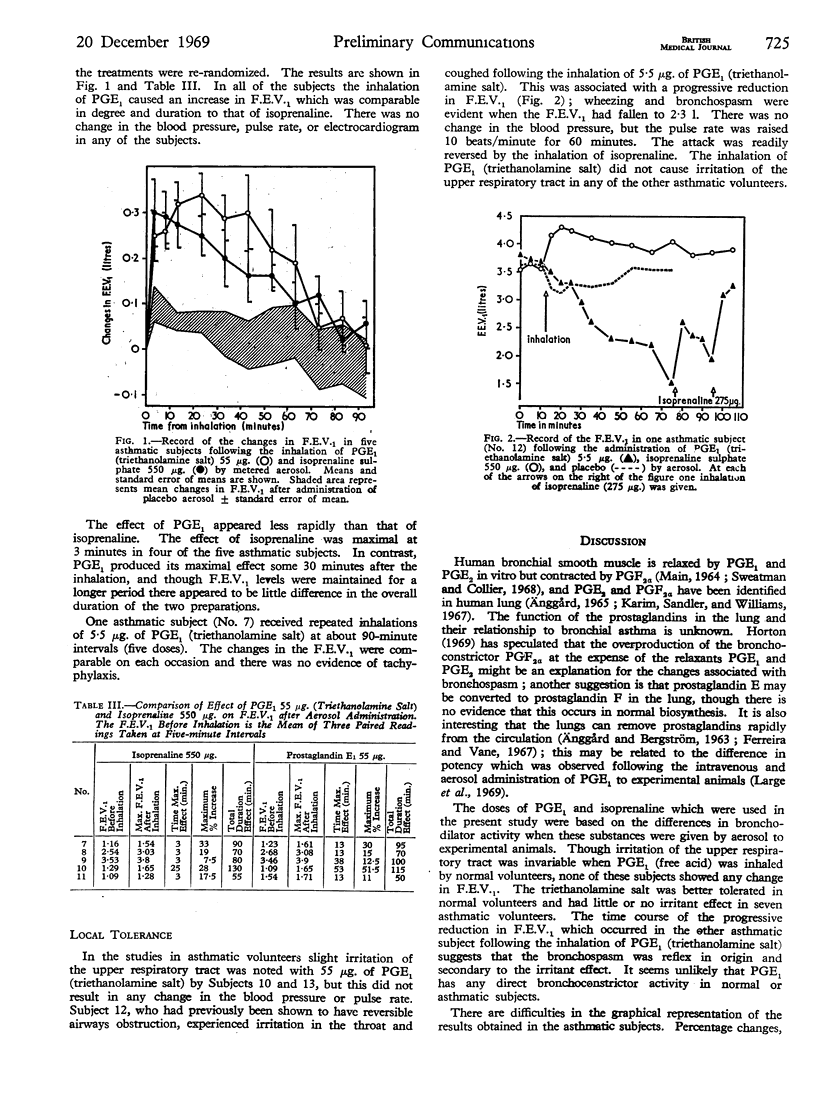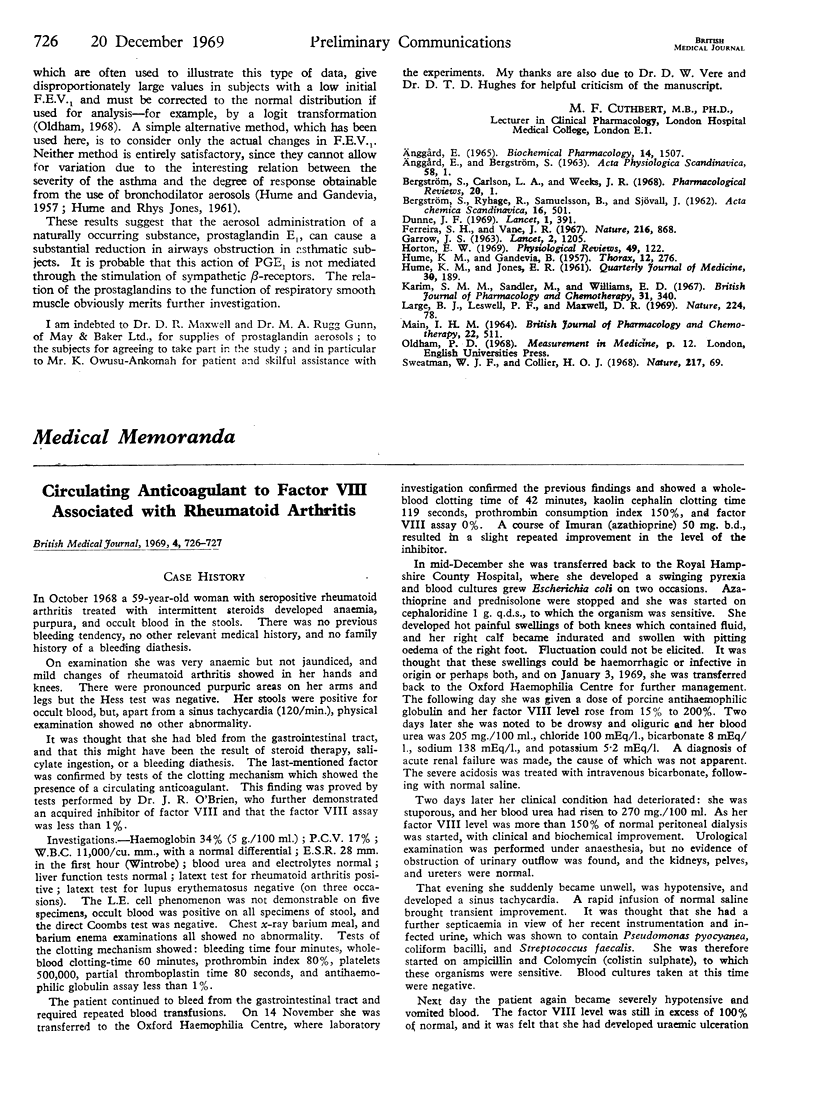Abstract
The forced expiratory volume in one second (F.E.V.1) was measured in healthy and asthmatic volunteers and the inhalation of prostaglandin E1 (PGE1) was compared with that of isoprenaline, using metered aerosols.
In healthy volunteers PGE1, either as the free acid or the neutral triethanolamine salt, did not affect the F.E.V.1; the free acid was irritant to the upper respiratory tract. In five out of six asthmatic volunteers with reversible airways obstruction, inhalation of 55 μg of PGE1 (triethanolamine salt) produced an increase in F.E.V.1 comparable in both degree and duration to that produced by an inhalation of 550 μg. of isoprenaline sulphate.
Though the triethanolamine salt was well tolerated in most of the asthmatic subjects studied, in one asthmatic subject this preparation caused coughing and there was a progressive reduction in the F.E.V.1 associated with bronchospasm.
Full text
PDF



Selected References
These references are in PubMed. This may not be the complete list of references from this article.
- Dunne J. F. Variation of blood-pressure in untreated hypertensive outpatients. Lancet. 1969 Feb 22;1(7591):391–392. doi: 10.1016/s0140-6736(69)91356-7. [DOI] [PubMed] [Google Scholar]
- Ferreira S. H., Vane J. R. Prostaglandins: their disappearance from and release into the circulation. Nature. 1967 Dec 2;216(5118):868–873. doi: 10.1038/216868a0. [DOI] [PubMed] [Google Scholar]
- GARROW J. S. ZERO-MUDDLER FOR UNPREJUDICED SPHYGMOMANOMETRY. Lancet. 1963 Dec 7;2(7319):1205–1205. doi: 10.1016/s0140-6736(63)92929-5. [DOI] [PubMed] [Google Scholar]
- HUME K. M., GANDEVIA B. Forced expiratory volume before and after isoprenaline. Thorax. 1957 Sep;12(3):276–278. doi: 10.1136/thx.12.3.276. [DOI] [PMC free article] [PubMed] [Google Scholar]
- HUME K. M., RHYS JONES E. The response to bronchodilators in intrinsic asthma. Q J Med. 1961 Apr;30:189–199. [PubMed] [Google Scholar]
- Horton E. W. Hypotheses on physiological roles of prostaglandins. Physiol Rev. 1969 Jan;49(1):122–161. doi: 10.1152/physrev.1969.49.1.122. [DOI] [PubMed] [Google Scholar]
- Karim S. M., Sandler M., Williams E. D. Distribution of prostaglandins in human tissues. Br J Pharmacol Chemother. 1967;31:340–344. doi: 10.1111/j.1476-5381.1967.tb02003.x. [DOI] [PMC free article] [PubMed] [Google Scholar]
- Large B. J., Leswell P. F., Maxwell D. R. Bronchodilator activity of an aerosol of prostaglandin E1 in experimental animals. Nature. 1969 Oct 4;224(5214):78–80. doi: 10.1038/224078a0. [DOI] [PubMed] [Google Scholar]
- MAIN I. H. THE INHIBITORY ACTIONS OF PROSTAGLANDINS ON RESPIRATORY SMOOTH MUSCLE. Br J Pharmacol Chemother. 1964 Jun;22:511–519. doi: 10.1111/j.1476-5381.1964.tb01705.x. [DOI] [PMC free article] [PubMed] [Google Scholar]
- Sweatman W. J., Collier H. O. Effects of prostaglandins on human bronchial muscle. Nature. 1968 Jan 6;217(5123):69–69. doi: 10.1038/217069a0. [DOI] [PubMed] [Google Scholar]


